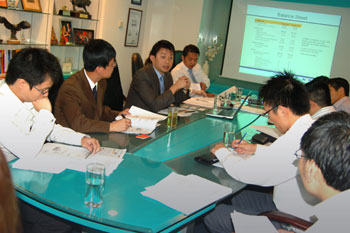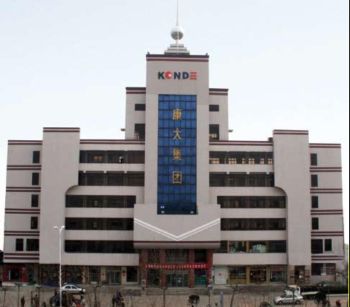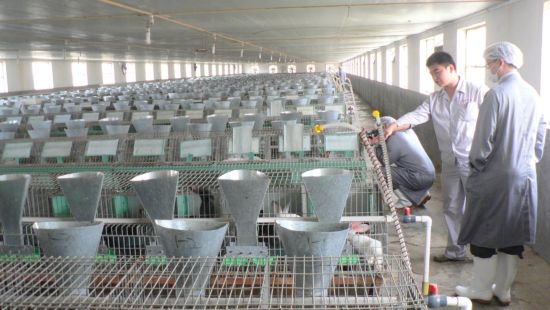
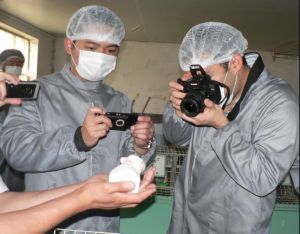
Photos by Leong Chan Teik
FOOD, GLORIOUS FOOD was not exactly what I had in mind when four analysts and I visited China Kangda, a diversified food processor listed on the Singapore Exchange.
And no, we weren’t on a food sampling tour to ‘ooh’ and ‘aah’ over delicious local cuisine in Qingdao, north-east China.
Instead, yesterday (June 24) we dropped in on production plants where China Kangda packages food, and its farms where some of the raw food comes from.
We endured the stench of animal waste (rather mild, actually) on the farms. In ultra-clean production facilities, we watched food being processed – not exactly a gastronomically delightful sight - before they ended up in beautiful packages.
So we had some interesting experiences of what China Kangda (market capitalization: around $150 million) does and, sure, even a taste of its food. Adding to our enjoyment were bottles of the famous Tsingtao beer, whose brewery is located right in Qingdao.
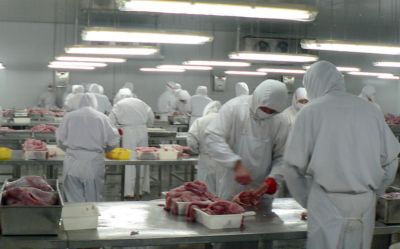
First visit to a rabbit farm
All of us had never been to a rabbit farm.
We visited one of the 14 belonging to China Kangda and which were located in various parts of Qingdao.
The rabbits were housed in cages in a roofed shelter. Rabbits, we learnt, are prolific at multiplying and they grow rapidly. (Perhaps that's the inspiration for Energiser Rabbits).
Birth to slaughter takes only about 70 days.
Rabbits are also high-yielding creatures: for 10 kg of food consumed, they yield 2.5 kg of meat. That’s a higher yield than that of chickens or pigs or cattle.
China Kangda has about four million rabbits, which derive ultimately from stocks that it imported from the United States and France.
Sales of China Kangda’s rabbit meat are taking off fast. Last year, it sold RMB120.2 million worth, up 91% from the previous year.
Rabbit meat accounted for 17% of the company’s total sales last year.
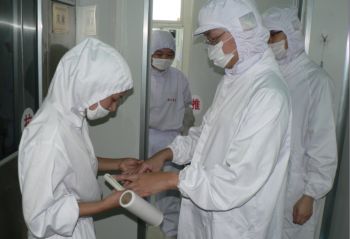
The figure is set to rise as China Kangda is setting up 10 rabbit farms in Jilin province for a total cost of RMB79 million, which will double its annual production capacity of rabbit meat to 12,000 tonnes by next year.
That will entrench the company position as the No.1 rabbit meat exporter to the EU. People in certain parts of the EU, such as Italy and France, love rabbit meat.
Hygiene & cleanliness
At the start of our visit to one of its food processing plants, we donned hygiene work gear – plastic overshoes, white boots, masks, white overcoats and hoods.
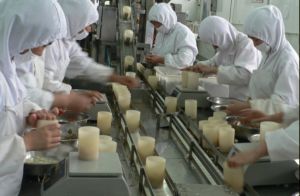
It’s enough to make you think you are a walking colony of bacteria!
Then came the hands: wash with soap, immerse in disinfectant for 30 seconds and then rinse. Apparently, that’s not enough to finish off the last pathetic bacteria, so a worker sprays your dried hands with ethanol.
Completely cleansed, we went on a guided tour to view workers handling cooked and raw food such as mushrooms and potatoes. If you are a China Kangda customer, you’d be glad to see that the workers are covered up in hygiene work gear and have been cleansed too.
China Kangda has ISO9001, ISO14001 and HACCP certifications. Given such credentials, it has been able to secure customers in countries such as Japan, South Korea and the European Union.
It derived 44% of its RMB728.4 million sales last year from exports.
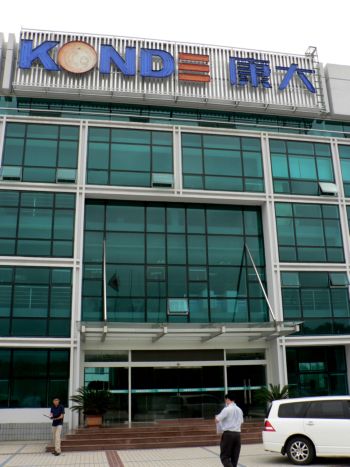
It produces ready-to-eat Japanese curry products, packed chestnuts, meatballs, fried chicken wings, fried chicken drumsticks, roasted/barbequed rabbit meat and seafood products.
New RMB15-m laboratory
China Kangda has been in business for the last 18 years. It reached a major milestone last year when it set up a laboratory for testing its raw food supplies and processed food.
We visited the laboratory, which is located on an entire floor of the building in the picture on the right and which is accredited by the China National Accreditation Service for Conformity Assessment.
The laboratory, which cost RMB15 million to set up so far, tests for pesticides, and non-legal animal drugs.
Now that tests are done in-house, product turnaround time will speed up compared to previously when China Kangda outsourced the testing.
Food tasting
It was inevitable that we would be treated to the products of China Kangda, and it happened at a lunch at the company’s premises hosted by its CEO, Gao Yanxu.
There was Japanese curry with rice (sweet and delicious but not spicy), soup with seafood (great!), fried onion rings (just as good as anywhere else), and rabbit and chicken meat (delicious but difficult to tell between the two).
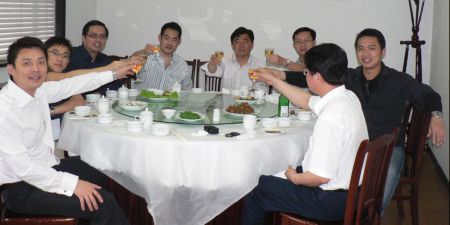
Asked about the impact of a general rise in the cost of raw food, CFO Stanley Leung said China Kangda is shielded to a large extent because it produces its own chicken and rabbit.
He said it was difficult to pass on cost increases to OEM customers who have signed long-term contracts.
Kim Eng analyst Goh Han Peng noted that the company’s operating cashflow and working capital days have been generally healthy, and asked if China Kangda would increase its dividend payout.
Stanley replied that the company needed to use its cash reserves (RMB 341 million) for capex, especially for the new rabbit farms, but it intended to maintain its past payout of 20% of net profit.
Some cash will be used to buy back China Kangda’s shares within a few months, said Stanley when asked about the share buyback proposal which shareholders approved recently.
The shares currently trade at a PE of 6X last year’s earnings. The outlook for this year looks set to improve further given that in Q1 this year, the company reported a 56% jump in net profit.
| 2003 | 2004 | 2005 | 2006 | 2007 | Q1 ‘08 | |
Revenue
|
155,372 | 345,271 | 447,652 | 506,962 | 728,407 | 212,263 (+56.6%) |
| Net profit (RMB ‘000) | 15,823 | 30,048 | 79,877 | 86,791 | 109,852 | 30,055 (+56.3%) |
Recent stories:
CHINA KANGDA: 'Olympic play with low valuations'
CHINA KANGDA AGM: Little impact from jumps in prices of raw materials



